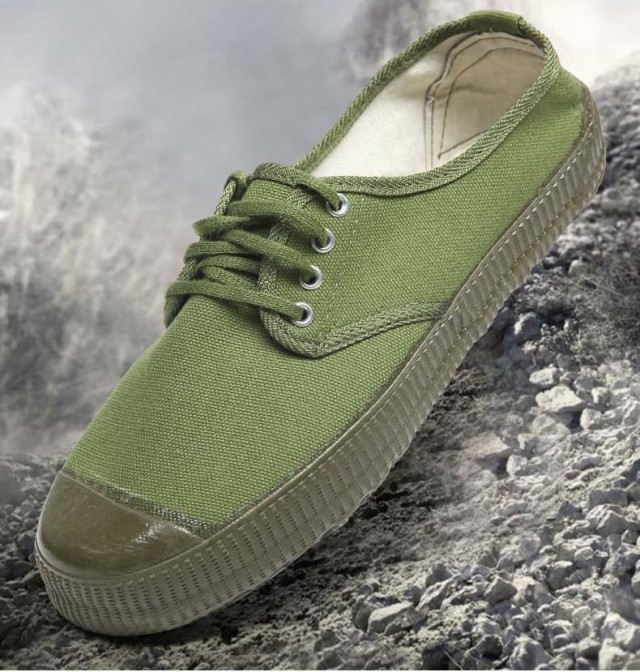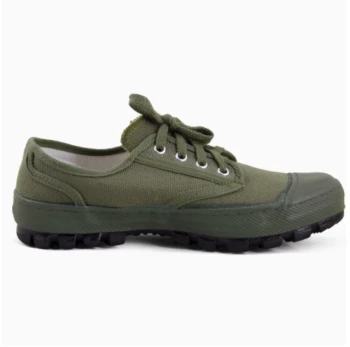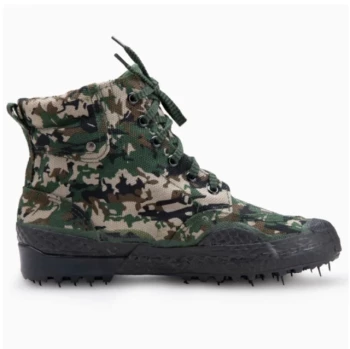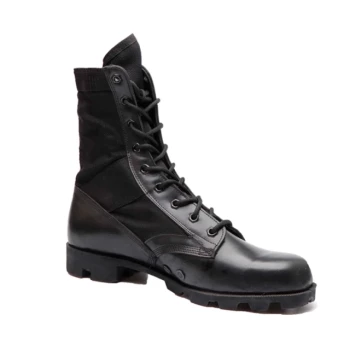For footwear manufacturers, achieving durable vamp construction that withstands vulcanization is a critical challenge. This guide breaks down the key steps to ensure your vamp production delivers long-lasting performance while maintaining compatibility with vulcanized soles.
Vamp Construction Fundamentals for Vulcanized Footwear
The vamp—the upper front part of a shoe—must endure repeated stress while bonding seamlessly with the sole during vulcanization. Here’s how to optimize each production phase:
Material Selection: Fabrics, Adhesives, and Reinforcement
- Fabric Choices: Prioritize tightly woven textiles (e.g., canvas or synthetic blends) for tear resistance.
- Adhesives: Use rubber-based adhesives that bond well under vulcanization’s high heat (typically 150–200°C).
- Reinforcement: Non-woven interfacing or thermoplastic layers add structural integrity without compromising flexibility.
Pro Tip: Test material combinations under simulated vulcanization conditions to identify delamination risks early.
Precision in Die-Cutting and Adhesive Application
- Die-Cutting: Laser-guided cutting ensures consistent vamp shapes, reducing uneven edges that weaken seams.
- Adhesive Spread: Apply adhesives evenly (0.1–0.3 mm thickness) to prevent bubbling during vulcanization.
Sewing Techniques for Stress Resistance
- Stitch Types: Lockstitches or chain stitches with reinforced thread (e.g., polyester-core spun yarn) resist abrasion.
- Seam Placement: Avoid high-stress areas like the toe cap; double-stitch critical joints.
Case Example: A manufacturer reduced vamp failures by 40% after switching to triple-needle stitching at stress points.
Ensuring Vulcanization Compatibility
Heat and Pressure Tolerance Testing
- Pre-Production Tests: Subject vamps to 30-minute cycles at 180°C to check adhesive bonding and fabric shrinkage.
- Pressure Simulation: Use hydraulic presses to mimic vulcanization, assessing seam integrity post-curing.
Common Quality Failures and Prevention
- Delamination: Caused by adhesive breakdown. Solution: Optimize glue curing time before vulcanization.
- Fabric Warping: Due to uneven heat exposure. Solution: Pre-shrink fabrics and use heat-resistant coatings.
Industry Insight: Leading factories integrate infrared scanners to detect adhesive gaps pre-vulcanization.
Industry Insights and Case Studies
Best Practices from Leading Manufacturers
- Automated Quality Checks: Vision systems inspect 100% of vamps for stitching defects before sole attachment.
- Modular Designs: Standardized vamp templates reduce material waste and speed up production.
Innovations in Sustainable Vamp Production
- Recycled Materials: Post-industrial fabric scraps are reprocessed into vamp linings without sacrificing durability.
- Water-Based Adhesives: Reduce VOC emissions while maintaining bond strength under heat.
Did You Know? Some brands now use blockchain to trace vamp material origins, ensuring ethical sourcing.
Upgrade Your Production Line with 3515’s Expertise
As a trusted partner for distributors and brand owners, 3515 combines cutting-edge vamp production techniques with scalable manufacturing solutions. Let’s collaborate to build footwear that excels in durability and comfort—contact our team to discuss your project.
Final Thought: Mastering vamp production isn’t just about precision; it’s about anticipating how every material and stitch interacts with the rigors of vulcanization. By adopting these strategies, you’ll create shoes that stand the test of time—both on the production line and in daily wear.
Related Products
- Durable Rubber Sole Outdoor Shoes Wholesale & Custom Manufacturing
- Wholesale High-Traction Camo Boots - Custom Manufacturer for Brands
- Durable Rubber-Soled Utility Shoes for Wholesale & Custom Brand Manufacturing
- Wholesale Durable Camo Canvas Shoes with High-Traction Rubber Soles
- Durable Canvas Work Shoes with Rubber Lug Sole | Wholesale Manufacturer
Related Articles
- How Vulcanized Rubber Boots Outperform Standard Footwear: Science and Practical Benefits
- How Vulcanized Rubber Powers High-Performance Applications Across Industries
- Why Vulcanized Shoes Dominate Durability and Comfort: A Technical and Practical Guide
- How Vulcanized Soles Became the Unsung Hero of Urban Footwear Culture
- How Vulcanized Shoe Construction Delivers Unmatched Durability and Flexibility



















